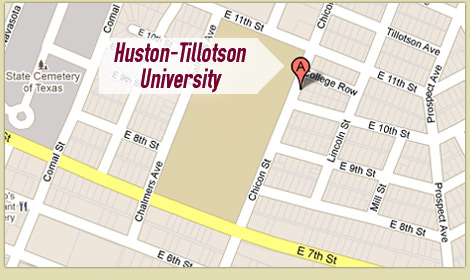
Severe Weather Alert on Monday, March 21
Monday Mar, 21 2022
Campus Community, please review the document below containing our Campus Tornado Watch/Watching Procedures. Our campus is working to ensure that the appropriate safeguards are in place. Please ensure that you are watching your local weather station, monitoring the University website (www.htu.edu), and are following the University on its social media channels: Facebook, Twitter, and Instagram; as updates will be shared there.
Huston-Tillotson University Weather Procedures
2.4.5.9.3 Tornado/Severe Weather Procedure 1. Alert people to move to the lowest floor available in the building; 2. Select the safest and most structurally sound parts of the building for safety (interior hallways or interior stairwells) that are away from glass, if possible; After reaching the designated shelter, remain calm, be ready to shelter and protect vital areas of the body by kneeling down and covering your head, if possible; 4. Do not leave buildings until “all clear” has been announced; 5. Remind people to stay away from all windows and glass cases; and 6. Give special assistance to disabled students and staff.
Facilities Management: HT tornado warning and recovery
If you see a tornado approaching, you have limited time to make important life-or-death decisions. Knowing the basics of tornado safety, planning, and participating in tornado safety drills lower the chance of injury or death if a tornado strikes our community.
Tornadoes are nature’s most violent storms. Spawned from powerful thunderstorms, tornadoes can devastate an entire neighborhood in seconds. Texas averages 16 tornadoes each year with peak activity in May; however, there is no true “tornado season” in Texas. Tornadoes are most likely to occur between 3 p.m. and 9 p.m. but can occur at any time. Because conditions can deteriorate so rapidly, being aware of the adverse weather will greatly improve your safety.
Know the terms:
A TORNADO WATCH means conditions are right for the development of a tornado or severe weather. During a watch, members of HT should be alert to possible changes in weather conditions.
A TORNADO WARNING means that a tornado or severe weather is occurring or has been sighted or indicated by National Weather Service radar.
DANGER SIGNS
Seek immediate shelter, if any of the following are encountered:
Dark, often greenish sky
A large, dark, low-lying cloud (particularly if rotating)
Loud roar, similar to a freight train
If a watch or warning has been issued, falling hail should be considered a real danger sign.
Before a tornado hits, the wind may die down and the air may become very still
TORNADO BASICS:
Tornadoes may strike quickly, with little or no warning.
The average tornado moves Southwest to Northeast but tornadoes have been known to move in any direction.
The average forward speed of a tornado is 30 mph but may vary from stationary to 70 mph.
About 1,200 tornadoes occur in the United States yearly, making the United States the country with the most tornado activity.
Tornadoes have been reported in every state and during every season.
Damage paths of tornadoes can be in excess of one mile wide and 50 miles long.
What to Do During A Tornado Warning:
Go to a room or corridor in the innermost part of a building at the lowest level possible.
Stay clear of windows, corridors with windows, or large free-standing expanses such as auditoriums and cafeterias.
DO NOT use elevators during a warning.
Close all doors, including main corridors, making sure they latch.
Crouch near the floor or under heavy, well-supported objects and cover your head.
IF YOU ARE OUTSIDE DURING THE WARNING:
If you cannot get to a safe shelter, lie down flat in a low area such as a ditch away from trees with your hands covering the back of your head and neck.
HOW HT WILL COMMUNICATE WITH YOU:
In the event of a TORNADO WATCH, an HT Alert will be broadcast to everyone as a text and email message.
During a TORNADO WARNING, an, HT Alert will be broadcast, sending a mass notification to text, email, voice, campus phones, building speakers, campus message boards, University computers, in addition to setting off the siren/PA system.





